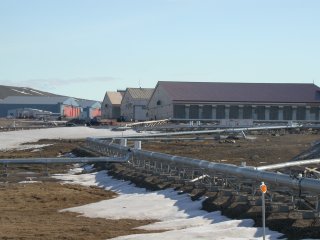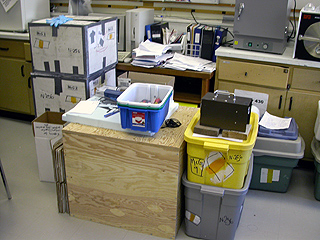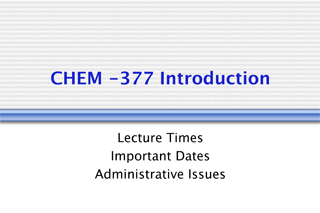I have the GC up and running with a great reproducible baseline of approx. 4.5 pA with a HP-5 column (30 m x 250 um x 1.00 um; l x id x film thickness). There is one significant peak at 18.5 min, which could be the diethyl-phtalate I also observe in the GC-MS (retention time is approx. the same). I have then started conditioning the fibers but had to finish early, because of the mandatory TGIF (someone help me with the acronyms here) at 3.30 pm. New arrivals were introduced and games were played. A buffet followed – nice.
I have also made a step closer to completing my plans for the sampling program. Starting Sunday I will sample 3 sites on a regular basis (1 daily, 2 every couple of days) for a time series: Two inland sites at the GAW lab and near the base (incl. MOUDI) and a coastal site on the shore of Alert inlet, away from the road. The bio-sampler will commute between the sites. Otherwise I will see, what other opportunities come up for single sampling events.
After checking back with my advisor I have scrapped plans to sample a triangle of three sites, approx. 10-15 km apart on 2-3 consecutive days. Data should have been used for a model, but I just cannot easily get sampling sites that far apart (8.5 km is the max for 2 sites and this means stretching it involving quite a bit of hiking).



